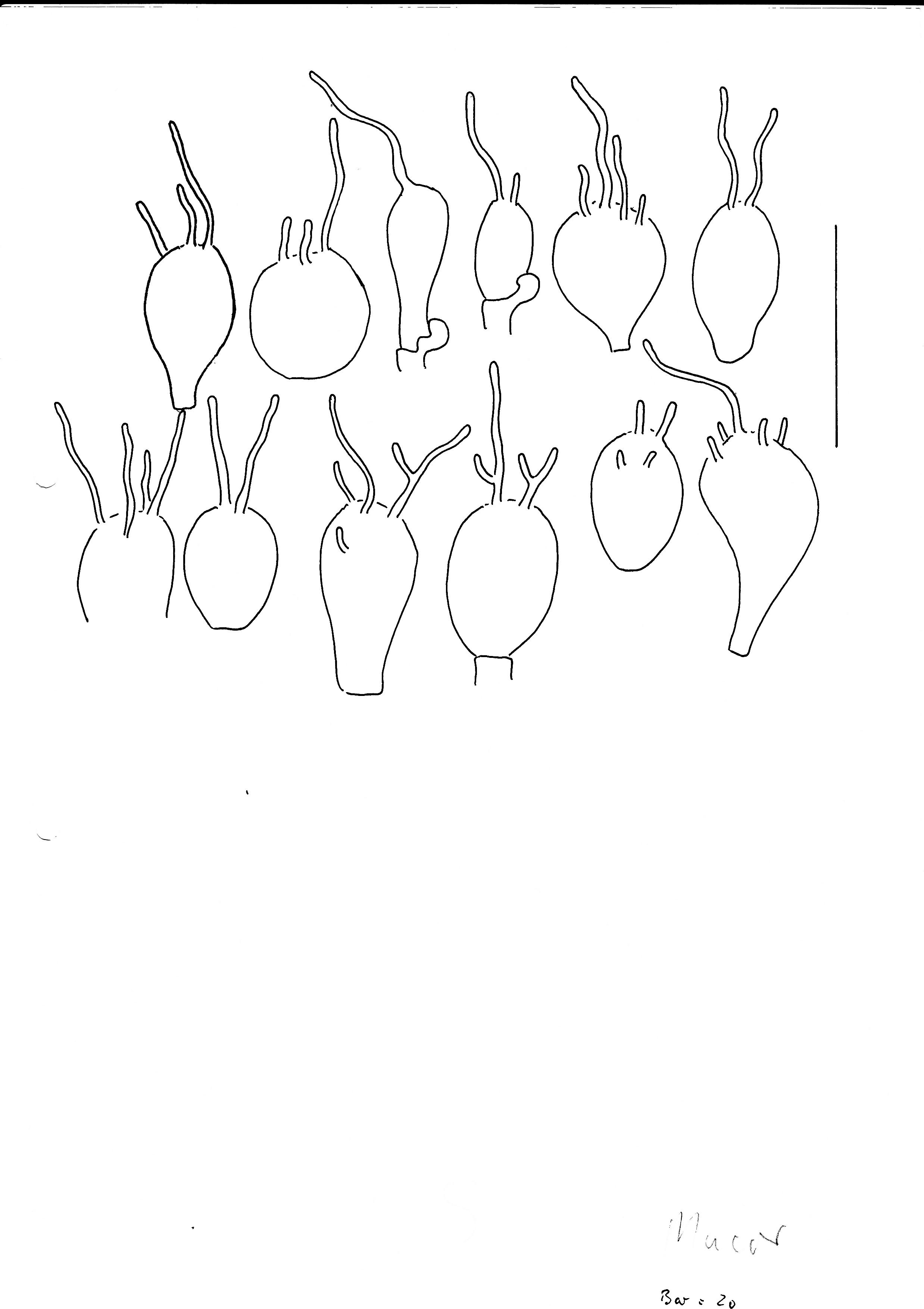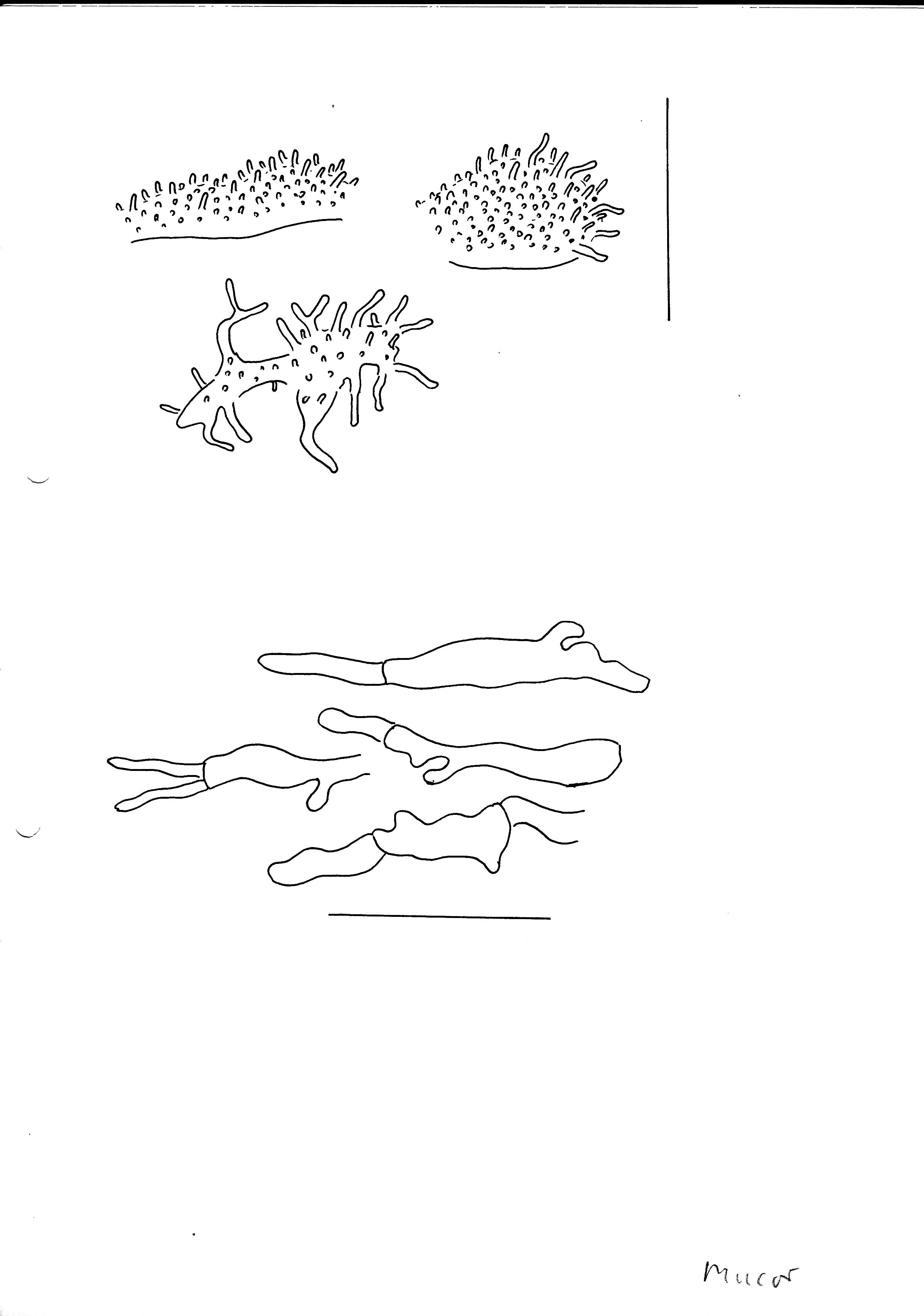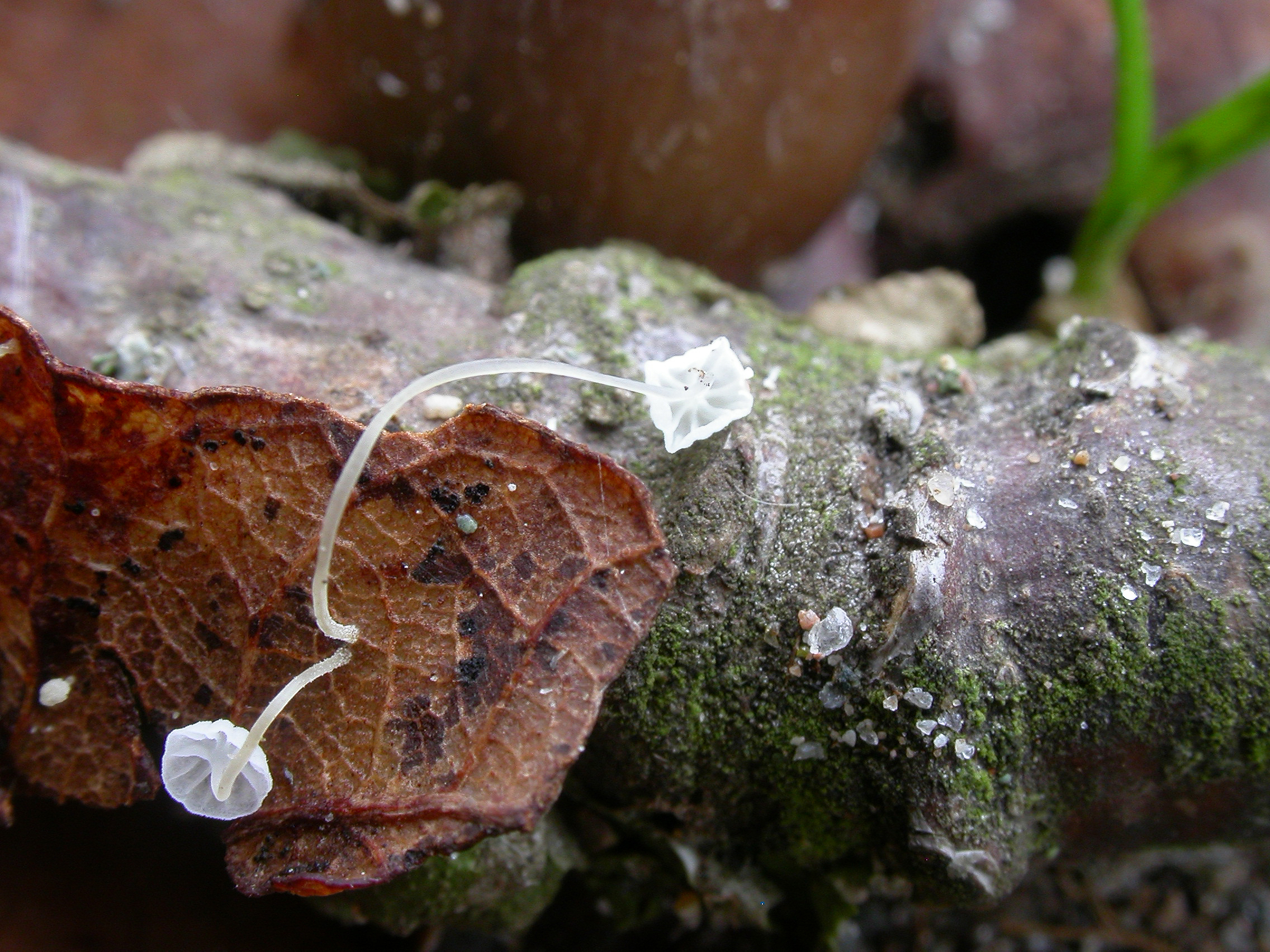Mycena mucor
Mycena mucor
Description
Cheilocystidia
Hyphae of the pileipellis and caulocystidia
Cap 1-4 mm across, covered with a separable, gelatinous pellicle, conical, broadly campanulate, parabolical to convex, sometimes shallowly depressed, sulcate, translucent-striate, pruinose but often appearing glabrous, at first pale grey or grey-brown, soon becoming more whitish. Gills 5-13 reaching the stem, adnate, white. Stem 2-20 x 0.1-0.4 mm, cylindrical, equal or somewhat wider at the base, glabrous for the greater part, pruinose-pubescent towards the base, shiny, watery white to watery grey, sometimes fairly dark grey below; springing from a small, whitish, pubescent basal disc. Odour none. Basidia 13-20 x 6-10 µm, broadly clavate to obpyriform, 4-spored. Spores 7-12 x 3-4.5 µm, Q = 1.8-2.5, Qav ˜ 2, elongated pip-shaped to almost cylindrical, amyloid. Cheilocystidia 8-30 x 6.5-15 µm, clavate to obpyriform or subglobose, with fairly few, usually simple, occasionally branched, curved to flexuous excrescences, 2-18 x 1-2 µm. Pleurocystidia absent. Lamellar trama dextrinoid. Hyphae of the pileipellis 1.5-7 µm wide, diverticulate to smooth, often branched and entwined, embedded in gelatinous matter, the upper surface of the pileipellis concisting of coarser, diverticulate hyphae 3.5-12.5 µm wide, terminating in clavate, diverticulate cells. Hyphae of the cortical layer of the stem 1.5-3 µm wide, smooth. Caulocystidia 9-65(-105) long, usually with an inflated base 3.5-6.5 µm wide, gradually tapering outwards, simple to branched, flexuous to kinked. Clamps present in all tissues.
Ecology and distribution
Typically on fallen, decaying leaves of Quercus. Often found under a carpet of leaves and not visible unless the leaves are removed. Outside Norway rarely found on other substrates, as Quercus fruits, Fagus leaves, and fallen leaves and twigs of Rubus sp. Norwegian records on fallen, decaying leaves of Salix sp. and Betula in alpine area may represent another, unknown species. Autumn to late autumn. Rare, but possibly overlooked.



